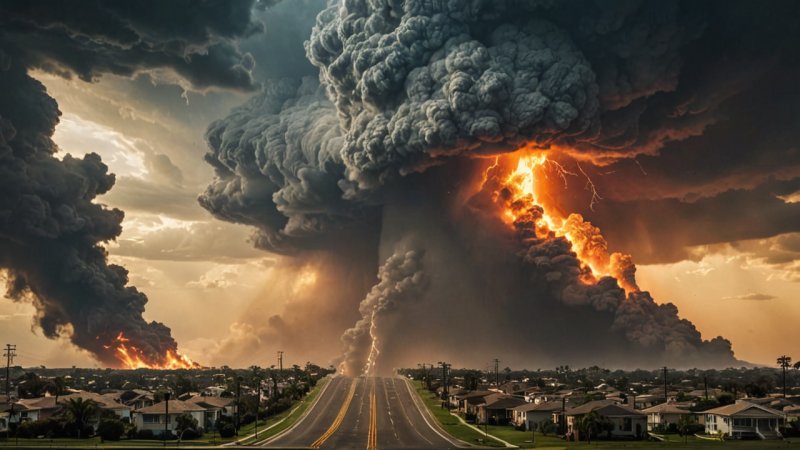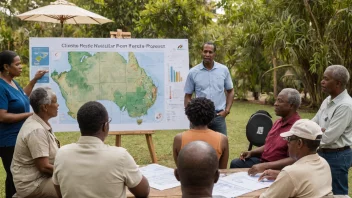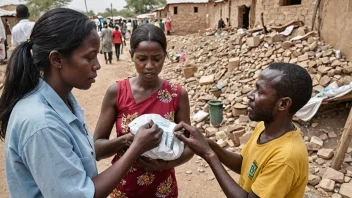Climate change is one of the most pressing issues of our time, influencing various aspects of life on Earth, including the frequency and intensity of natural disasters. From hurricanes to wildfires, the changing climate is reshaping our environment and posing unprecedented challenges to communities worldwide. This article delves into the intricate relationship between climate change and disaster occurrences, exploring the science behind it, the implications for humanitarian aid, and what individuals can do to help mitigate these effects.
Understanding Climate Change
Climate change refers to significant changes in global temperatures and weather patterns over time. While climate change is a natural phenomenon, recent trends have been exacerbated by human activities, particularly the burning of fossil fuels, deforestation, and industrial processes that release greenhouse gases into the atmosphere. These gases trap heat, leading to a rise in global temperatures, which in turn affects weather systems.
The Science Behind Climate Change and Disasters
The relationship between climate change and the frequency and intensity of disasters is complex. As temperatures rise, the Earth's atmosphere can hold more moisture, leading to more intense rainfall and storms. Higher temperatures also contribute to drought conditions, affecting water supply and food production. Understanding these changes is crucial for predicting and preparing for disasters.
Increasing Frequency of Extreme Weather Events
Research indicates that climate change is linked to an increase in the frequency of extreme weather events. For instance, hurricanes have become more intense, with warmer ocean temperatures fueling their strength. Similarly, heatwaves are occurring more frequently and lasting longer, posing health risks to vulnerable populations.
Impact on Vulnerable Regions
Developing countries, particularly those in tropical and subtropical regions, are disproportionately affected by climate change. These areas often lack the infrastructure and resources to cope with disasters, making communities more susceptible to the impacts of extreme weather. As a result, climate change is not just an environmental issue but also a significant social justice concern.
Humanitarian Aid in the Age of Climate Change
The increasing frequency and intensity of disasters due to climate change place immense pressure on humanitarian organizations tasked with disaster relief. These organizations must adapt their strategies to address the new realities of climate-induced disasters.
Preparedness and Response Strategies
Humanitarian agencies are now focusing on enhancing preparedness measures to mitigate the impact of disasters. This includes investing in early warning systems, improving infrastructure, and conducting community training programs to ensure that populations are equipped to respond effectively.
Collaboration and Community Engagement
Collaboration between governments, NGOs, and local communities is essential. Engaging communities in disaster preparedness not only empowers them but also ensures that strategies are culturally relevant and effective. Training local volunteers, developing local response plans, and utilizing indigenous knowledge can significantly enhance resilience to climate-related disasters.
The Role of Education and Awareness
Education plays a critical role in addressing the impacts of climate change on disaster frequency and intensity. Raising awareness about climate change and its consequences can mobilize communities and individuals to take action.
Incorporating Climate Education in Schools
Integrating climate education into school curriculums can equip the next generation with the knowledge and skills needed to tackle climate issues. This includes understanding the science of climate change, recognizing the importance of sustainability, and learning how to engage in community service initiatives.
Public Awareness Campaigns
Public awareness campaigns can also play a vital role in informing individuals about the impacts of climate change and encouraging them to participate in local initiatives. Social media and community events can be effective platforms for spreading awareness and fostering a sense of urgency around climate action.
Individual Action: Making a Difference
While systemic change is crucial, individual actions can also contribute to mitigating the effects of climate change. Here are some ways individuals can get involved:
- Reduce Your Carbon Footprint: Simple actions like using public transportation, reducing energy consumption, and supporting renewable energy sources can significantly lower your carbon emissions.
- Volunteer with Local Organizations: Many local NGOs focus on disaster preparedness and environmental protection. Volunteering your time can help strengthen community resilience.
- Advocate for Policy Change: Engage with local and national policymakers to advocate for climate-friendly policies and practices. Joining or supporting advocacy groups can amplify your voice.
- Educate Others: Share information about climate change and its impacts with friends, family, and your community to raise awareness and inspire collective action.
Conclusion
The impact of climate change on disaster frequency and intensity is a pressing issue that requires immediate attention and action. As we face an increasingly unpredictable climate, it is essential to understand the science behind these changes and the implications for humanitarian aid and community resilience. By enhancing preparedness, promoting education, and engaging in individual actions, we can work together to mitigate the effects of climate change and build a more sustainable and equitable future for all.






